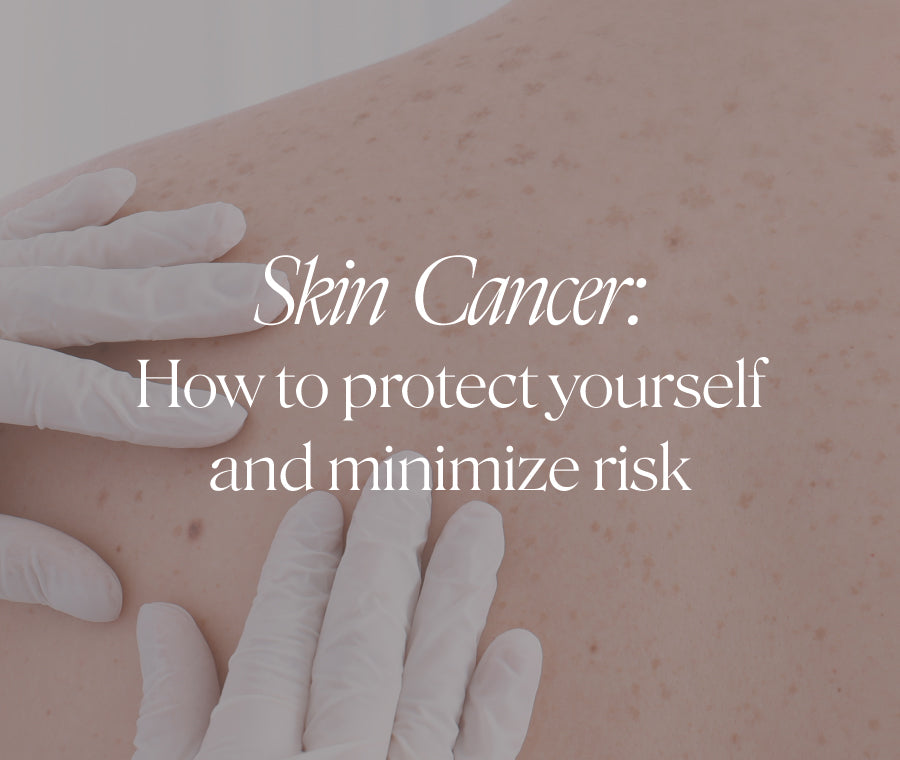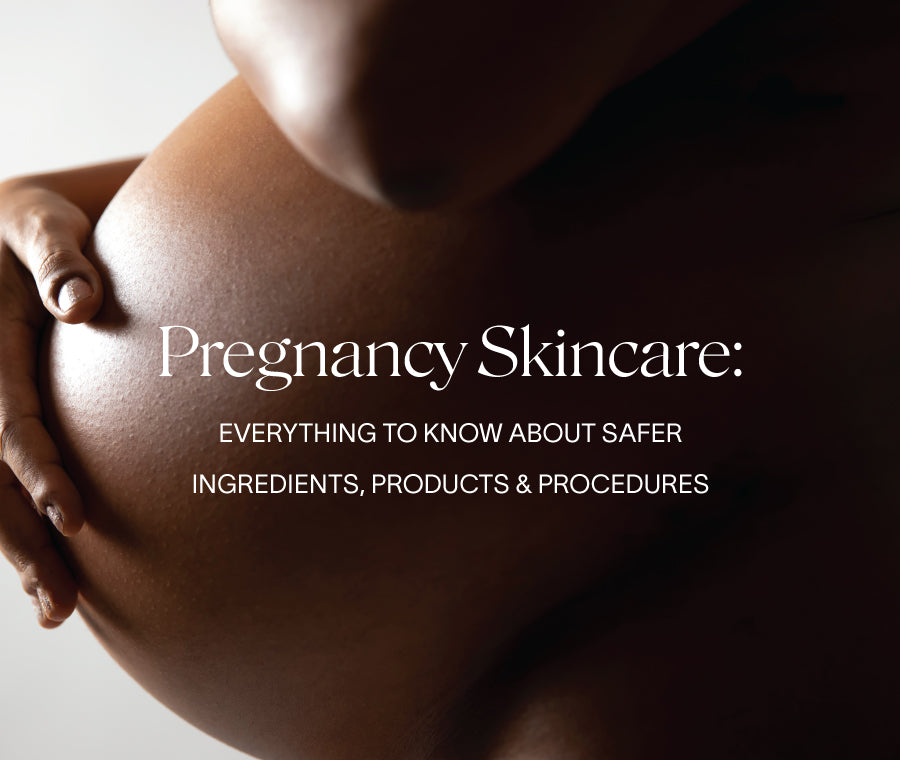This topic is dear to me as a fellowship-trained Mohs surgeon who literally sees patients in the office every day with a skin cancer diagnosis. First, I want to get the message out that skin cancer can be and should be highly curable. However, this requires you to be looking at your skin and assessing for worrisome spots or changes. Also, it requires you to get a skin examination once a year to make sure that a qualified expert is also looking at your skin. If you are good about both those things your likelihood of dying from skin cancer is almost zero. So the most important thing is being proactive.
How Does the Sun Cause Skin Cancer?
In a nutshell, the sun emits UV radiation. That radiation hits our bodies and causes damage to DNA. In response, our body creates a pigment called melanin to try to protect itself from further UV damage. Melanin is also what gives our body a tanned appearance, and it is good at absorbing UV radiation. Our body also has ways to try to go back and repair the DNA damage that occurred from the UV radiation. Unfortunately, sometimes the DNA damage occurs in such a way that the body is not able to repair the damage, and a mutation in the DNA occurs that leads to a cancer developing.
How Can I Minimize My Risk of Getting Skin Cancer?
If I could stress anything here it would be DON’T GET SUNBURNED, but really you should avoid tanning in general. Do not go to a tanning salon unless it's for a spray tan. I’m not trying to ruin the fun of the sun for people, but when it comes to your skin there is never a good reason to lay in the sun or in a tanning bed. Get outside and be active by all means, but always remember your sunscreen, sunglasses, and a hat. Stay away from sunlamps and tanning beds at all costs. There are no specific foods that are evidence based to offer skin cancer prevention, but foods high in antioxidants (berries, nuts, seeds), omega 3 fatty acids (fish, chia & flax seeds), polyphenols (dark chocolate, tea), vitamin D (fortified milk, fatty fish), and lycopene (tomatoes, watermelon, pink grapefruit) all may offer some benefit.
What Times of the Day Should I Be Most Careful?
Avoid long term direct sun, particularly during the most powerful hours of the day, which is usually 11:00 AM until 4:00 PM (the typical peak UV index hours). Be extra careful around water, snow and sand as it can reflect UV to increase your exposure. You want to avoid when the sun is the strongest with the most UV getting through the atmosphere. This happens when the sun is the highest in the sky.
The UV index is a rating scale used to quantify how much UV radiation is getting through the atmosphere. The higher the number, the more powerful and harmful the UV exposure. It ranges from 0-11+. On the lower end of the scale, you can spend a lot more time outdoors and still have minimal risk of UV damage or sunburn. Conversely, at the high end you have to be extra careful. Here is a great tool where you can enter your zip code and get a risk assessment.
How Often Should I Apply Sunscreen and What Sunscreen Should I Use?
I have a few blogs that really go into the nuances of this here. Generally speaking, you want to apply early and often with something over SPF15 rating or higher. If you're sweating or in the water, apply more often. If it is very sunny, apply more often like every 2 hours or even more. Mineral vs chemical sunscreen is another thing to consider, which I elaborate on here. It is important to know that they work in different ways and should be applied with specific consideration.
What Are Some Healthy Habits for Early Skin Cancer Detection?
Do Skin Checks on Yourself MonthlyI advise my patients to inspect their skin once per month. Don't do it more than that because you can really drive yourself crazy. Look at your skin and pay extra attention to your moles. I encourage my patients to take a picture of moles and compare them from time to time, as it's a good way to keep track of change. Further, you can also show your provider if or how it's changing.
If you see a brown spot that shows up, I generally think it is okay to ignore it for a month. Again, feel free to take a picture to document what it looks like. Recheck the area in a month and compare. If it is getting bigger or looks concerning, it's time to get it checked by a professional. If a spot shows up and then a month later it looks different, it's really important that you are your own advocate and you go in and get that spot looked at and potentially biopsied. Anything that does not go away could be a sign of something that warrants a trip to the dermatologist. We all get lumps, bumps, scabs and don't know what they are from, but they should resolve. I always tell my patients, give it a month, and if it is still there, I should see it.
Have a Professional Do an Annual Skin ExaminationThe American Academy of Dermatology recommends annual skin exams. If you are under 40 and have no family history of skin cancer or no additional risk factors the exams can happen less frequently. However, if you spend a lot of time in the sun, use tanning beds, or have more than 100 moles or a family history of skin cancer, you should find a dermatologist you trust and get your skin examined.
I appreciated that it is hard to get in with a dermatologist, so I recommend you make your appointments early. Also, when you leave the office, make an appointment for the following year so that spot is reserved for you.
What Should I Do If I Get a Sunburn?
I have a whole blog and youtube video dedicated to this here. If this happens, you need to first get out of the sun immediately and go indoors. Stay out of the sun until the redness is gone. This means that if you go outside you need long sleeves and pants, SPF 15 or greater, a huge hat, and probably some sort of scarf to protect your face and neck.
I recommend my patients take ibuprofen or Aleve to decrease the inflammation that goes along with the sunburn. Drink lots of water. You need to flush all the toxins your body is making out of your system. Plus, you’ll likely already be dehydrated. Take as cold of a shower or bath as you can tolerate, and use ice packs over the areas to calm inflammation. Many people use aloe vera gel to try to get some relief. If blisters pop up, try to keep them intact as it offers a natural bandage and decreases risk of infection. My Day Preventive Treatment will calm a lot of redness as well, in part due to the Vitamin C. Moisturize frequently to try to keep the skin barrier intact. Make sure to pick a moisturizer that is really formulated for sensitive skin, as you don’t want any additional irritants adding fuel to the fire. My Body Cream would be excellent for this.
Unfortunately, you’ve just increased your chance of getting skin cancer as well. It doesn’t mean that you are automatically going to get skin cancer or, if you do end up with one, when that will happen. It certainly won’t be days, weeks or even months.
Types of Skin Cancer
More than 1 million cases of skin cancer are diagnosed in the United States every year. The three most common types of skin cancer are basal cell carcinoma, squamous cell carcinoma and melanoma. There are numerous other more rare types of skin cancers (ex. Merkel cell, spindle cell, apocrine, etc).
Basal Cell CarcinomaThis is the most common type in the United States and fortunately is also the least aggressive. Approximately 1:4 people will get this type of skin cancer in their life. They are usually slow growing and almost never metastasize or spread to lymph nodes. These develop in areas of increased sun exposure and there is also a genetic predisposition. These skin cancers typically start as a pink, shiny bump that bleeds easily when rubbed or a flat pink scaly patch that does not go away over time.
Squamous Cell CarcinomaThis is the second most common skin cancer in the USA, and they also develop in areas of increased sun exposure. There is also a genetic disposition. These are still easily cured when found early but have the ability to grow more quickly and spread to other parts of the body. Around 2500 people die a year from this type of skin cancer. Squamous cell carcinomas typically start as flaky, crusted patches on the face and areas of chronic sun exposure. They can also also be firm, tender nodules that develop on the legs of women.
MelanomaMelanoma is the least common of these three times, although the incidence has been steadily increasing for the past 30 years. We are also seeing a lot more melanoma in young people. Despite the incidence of melanoma increasing, death from melanoma is DECREASING in the US because people are doing a better job of getting their skin checked. Melanoma presents typically as a blotch or a brown spot that is growing or changing in areas of increased sun exposure. The risk of developing melanoma is higher if you personally have had a number of blistering sunburns or if you have a family member that has had melanoma. Having over 100 irregular moles is also a risk factor and necessitates extra vigilance. Women tend to get melanoma most commonly on the legs and men most commonly on the back.
Prognosis and treatment of melanoma are very much correlated with how deep the melanoma burrows into your skin. Classifications systems are used for this, including the Clark and Breslow scale. Generally speaking, the deeper the melanoma burrows, the higher the chance it has spread elsewhere.
The ABCDs of melanoma is a mnemonic tool used to help look at a skin spot and determine some risk. It isn’t a substitute for a skin examination for a professional.
How Are Skin Cancers Treated?
For most skin cancers, we do a skin excisions where tumor with about .5cm margin of normal skin is removed, sent to pathology for further review but the patient is stitched up immediately. Mohs Micrographic Surgery is a very specialized method of surgery for basal cell and squamous cell carcinomas. Here the dermatologic surgeon removes the skin cancer and typically a smaller margin of normal skin. Then while the patient waits this piece of tissue is frozen, cut and stained and made into microscope slides. The dermatologic surgeon reviews these slides to ensure complete clearance of the tumor before the reconstruction takes place. This method is used for high risk tumor or tumors in cosmetically important areas like face and hands. Training to perform Mohs surgery, reading pathology and the reconstruction is a fellowship that can be done after completing your dermatology residency. I completed my dermatology residency and fellowship in Mohs surgery at Columbia University Medical Center in NYC.
Sign-up HERE for our newsletter to receive access to expert skin care advice from founder and dermatologist Dr. Heather D. Rogers, MD.
The information provided by Dr. Rogers is general health information inspired by this topic. The information in the Doctor Rogers web site, and related links, articles, newsletters and blogs, is provided for general information and educational purposes only. It should not be a substitute for obtaining medical advice from your physician and is not intended to diagnose or treat any specific medical problem (and is not an extension of the care Dr. Rogers has provided in her office for existing patients of her practice). Use the information and products on this site at your own risk. Use of this site indicates your agreement with these statements and the Terms and Conditions of Doctorrogers.com. If you do not agree to all of these Terms and Conditions of use, please do not use this site! Never ignore your own doctor’s advice because of something you read here; this information is for general informational purposes only. There is no doctor patient relationship implied.



